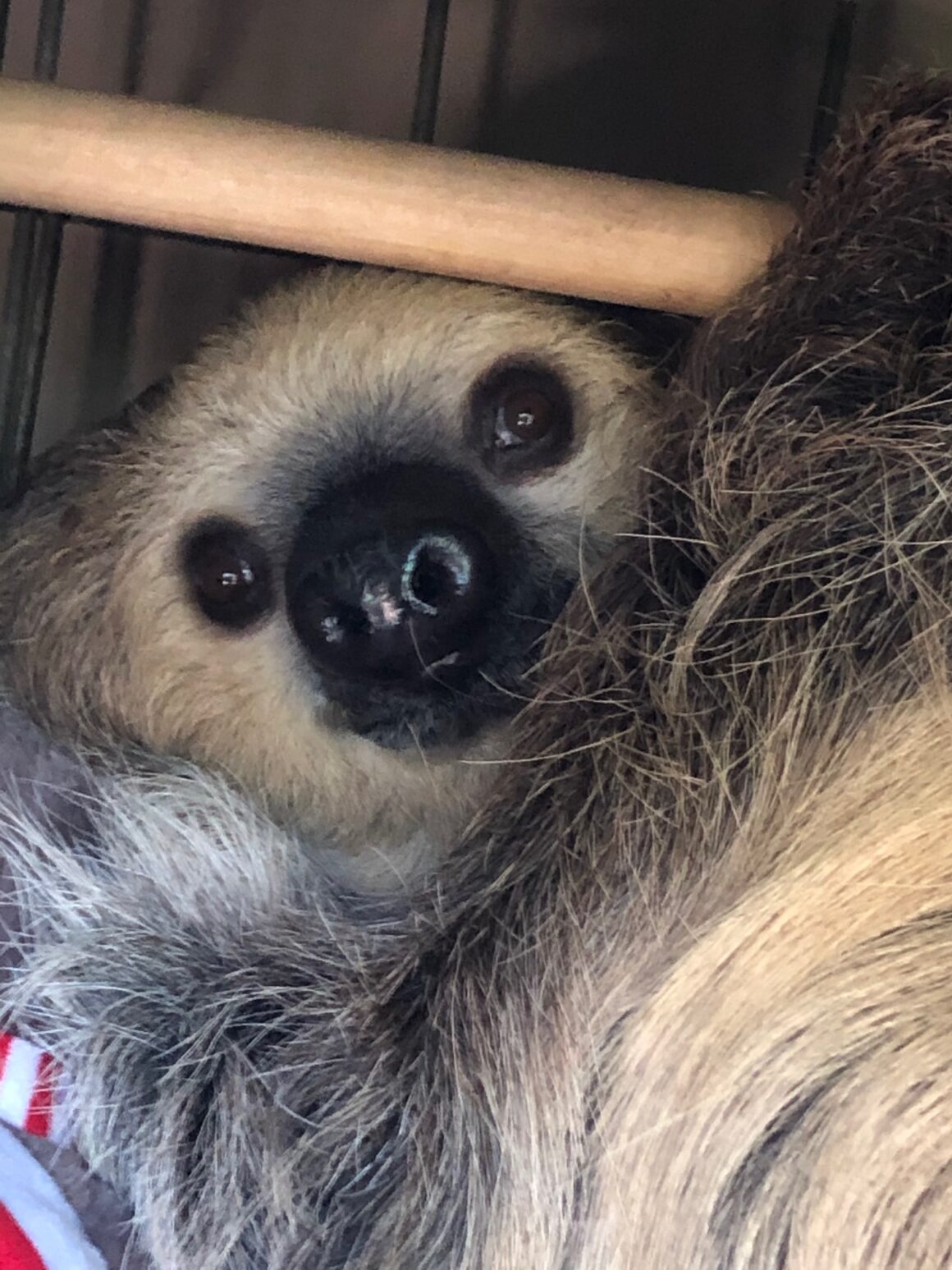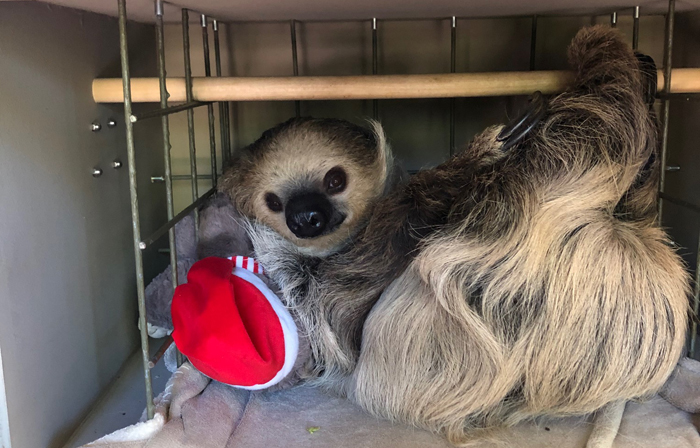The Phoenix Zoo offers camp experiences for kids of all ages where each week-long session is filled with up-close animal encounters, behind-the-scenes experiences, hands-on activities, in-depth investigations and more.
Now kids and their parents can have a “backstage adventure” together with one of the zoo’s most popular residents – Fernando, the Linne’s two-toed sloth.
Fernando came to the Phoenix Zoo at the end of 2017 from the National Aquarium in Baltimore, MD. After a year, sloths get “kicked out” of their family group, so that’s how he came to call Arizona home.
Recently, my family and I experienced this backstage adventure guided by Mary Yoder, Fernando’s keeper and the collections manager of primates at the Phoenix Zoo.
During the encounter, you enter into Fernando’s habitat as Mary shares her vast knowledge of this endearing creature. We were warned ahead of time that Fernando might be sleeping, but he woke up long enough for us to snap some photos and watch him eat a few fresh veggies.
The name two-toed sloth comes from the fact that he has two “toes” on his front feet and three toes on the back. They look more like long talons than toes. His toes are also double-jointed, and he can move them in any direction, which helps him move quickly when necessary. Mary vouched for the fact that he can move when startled!
 He also has large canine teeth, which serve as his biggest defense against predators, and he’s good at camouflaging himself too, and being still, so most times a predator won’t even notice him perched in a tree.
He also has large canine teeth, which serve as his biggest defense against predators, and he’s good at camouflaging himself too, and being still, so most times a predator won’t even notice him perched in a tree.
“He’s a vegetarian,” says Mary. “In the wild, they’ll eat some insects and grubs too, but he doesn’t seem to like them.” He takes a few bites of carrot during our encounter before having to rest again. Mary says they put out food for him to consume at night.
Fernando is equipped for the nightlife with tiny pupils that are don’t work well in bright light but give him an advantage under cover of darkness. He also uses his large (and really cute!) nose to navigate and find food.
One thing we all noticed is that he doesn’t have an odor like many wild animals do. His hair is very coarse, and Mary explained that it is an adaptation to his environment. Algae grows quickly inside the hair, and there is a moth that is attracted to the algae, so in the wild sloths become their own microhabitat.
Sloths also only “do their business” once every 7 to 10 days due to their slow metabolism and the fact that they do everything upside down. They also don’t consume much water, getting it instead from the leaves and plants in their environment.
“When they go to the bathroom in the wild, they go down to the ground and dig a hole by a tree,” says Mary. “They then defecate and urinate and climb back up. So they are providing a lot of nutrients for that tree. They play an important role in the ecosystem.”
Fernando has a large habitat with access to indoor and outdoor areas. There are two large boxes in each of these areas that he spends most of his time inside. “These boxes were made specifically for him,” says Mary. “The top pole is so that he always has something to hold onto. Sloths always have to have their hand or foot on something; they won’t just lay down flat. It’s a security thing for them.”
Another reason for the box is that if they have to move him for any reason, they can put in an insert and pick the box up.
“He’s so sweet, but if you try to pick him up or move him, he will bite with those big teeth,” says Mary. “Although he’s really nice, and we can hand feed him, we don’t try to pick him up or manipulate him too much.”
Luckily for all of us, sloths in captivity can live into their 20s, and since Fernando was only about a year old when he came to Arizona, we have a lot of years ahead to enjoy him.
And if you’re wondering, he arrived with that name, although they had nicknamed him Fern in Baltimore. Mary says, “We like to use his whole name.” Once you meet him, I think you’ll agree; his name suits him.
Sloth Backstage Adventure
When: Mondays 12:15 pm; this is a 45-minute tour and for only up to five guests
Where: Phoenix Zoo, 455 N. Galvin Pkwy., Phoenix
Cost: $99 per person; children under the age of 16 must be accompanied by a paid person 16 years of age or older.
Information: phoenixzoo.org/visit/tours/






